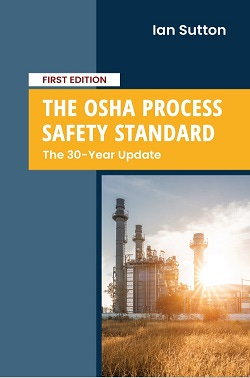Updates to the EPA RMP Rule
Background and an Index
We started this series of posts by reviewing the proposed changes to OSHA’s Process Safety Management standard. However, OSHA is not the only agency going through this update process. The United Sates Environmental Protection Agency (EPA) has proposed to update their Risk Management Program (RMP).
The OSHA and EPA process safety programs derive their authority from the Amendments to the Clean Air Act of 1992. This legislation directed the two agencies to develop, implement and enforce process safety standards in order to protect both workers and the public. (This legislation also authorized the creation of the Chemical Safety Board.) Some states also introduced their own process safety regulations at roughly the same time.
Reference Documents
The reference document for OSHA is their Notice of stakeholder meeting, Federal Register / Vol. 87, No. 167 / Tuesday, August 30, 2022 / Notices. The corresponding reference for the EPA is their Safer Communities by Chemical Accident Prevention (SCCAP).
OSHA and the EPA
The goal of keeping the two standards similar to one another is shown in the following statement, which is taken from the EPA’s SCCAP.
Both the OSHA PSM standard and EPA’s RMP rule aim to prevent or minimize the consequences of accidental chemical releases through implementation of management program elements that integrate technologies, procedures, and management practices.
Although the intent has always been that the standards from the two agencies be similar to one another. But they have never been identical. The same applies to the respective proposed updates. There are strong similarities between them, but they are not identical.
One reason for the difference between the two agencies is that they have different concerns and priorities from one another. The Occupational Safety and Health Administration (OSHA) is concerned mostly with the safety of workers “inside the fence”. The Environmental Protection Agency is more concerned with environmental issues, and with the safety of people living outside the facility. There is, of course, a lot of overlap between the two — a release of hazardous materials can affect both employees and members of the public. The materials themselves are not aware of the existence of the property boundary.
Like OSHA, the EPA was required to update their standard by Executive Order 13990 Protecting Public Health and the Environment and Restoring Science To Tackle the Climate Crisis (2021). In response to this directive, the EPA issued its Risk Management Program (RMP) Safer Communities by Chemical Accident Prevention Proposed Rule.
A full review of the OSHA requirements is provided in our book The OSHA Process Safety Standard: The 30-Year Update.
Length
The first, and most noticeable, difference between OSHA’s proposed updates and the EPA SCCAP is to do with the length of the respective documents. The OSHA Notice of stakeholder meeting document is just two pages in length and contains just over 2,000 words. The EPA document is 61 pages long and contains about 65,000 words.
One reason for the difference in length is that the EPA describes its legislative authority in detail; OSHA does not. However, the biggest reason for the difference in the length of the two documents is that the EPA provides extensive discussion to do with its proposed changes. An example of this difference can be seen with regard to the respective proposals for addressing ‘natural hazards and extreme temperatures’. OSHA provides 21 laconic words to this potentially controversial topic; the EPA provides us with two and a half pages of dense text.
Topics
The OSHA document identifies 24 areas where they would like to see changes. (The number of topics could probably be reduced. For example, they could merge Definition of RAGAGEP and Updates to RAGAGEP.) The EPA has fewer topic areas, but they are very similar to what is in the OSHA list. In this regard, the two sets of proposed updates are well-aligned.
Index to the RMP-Related Posts
This following is the current list of our posts to do with the proposed updates to the EPA Risk Management Program.




